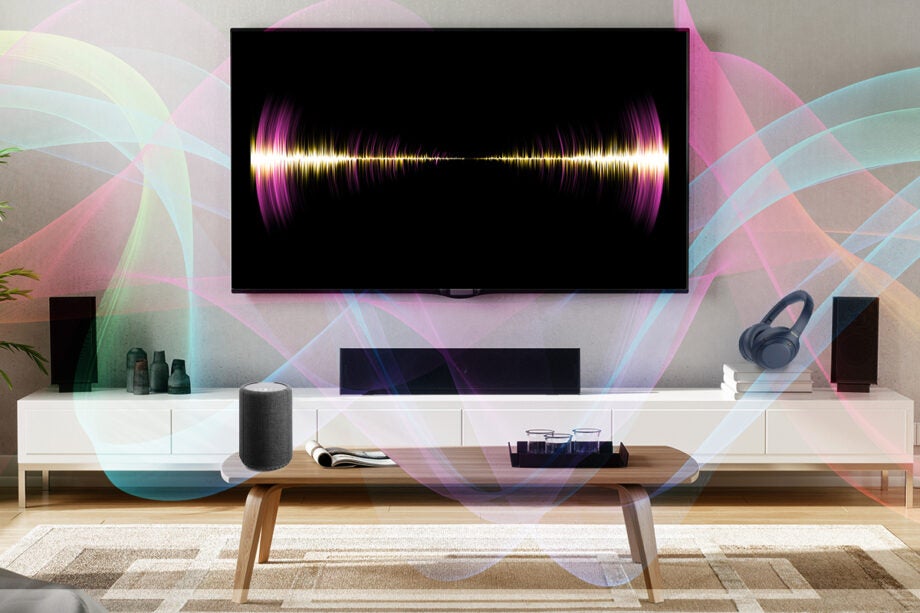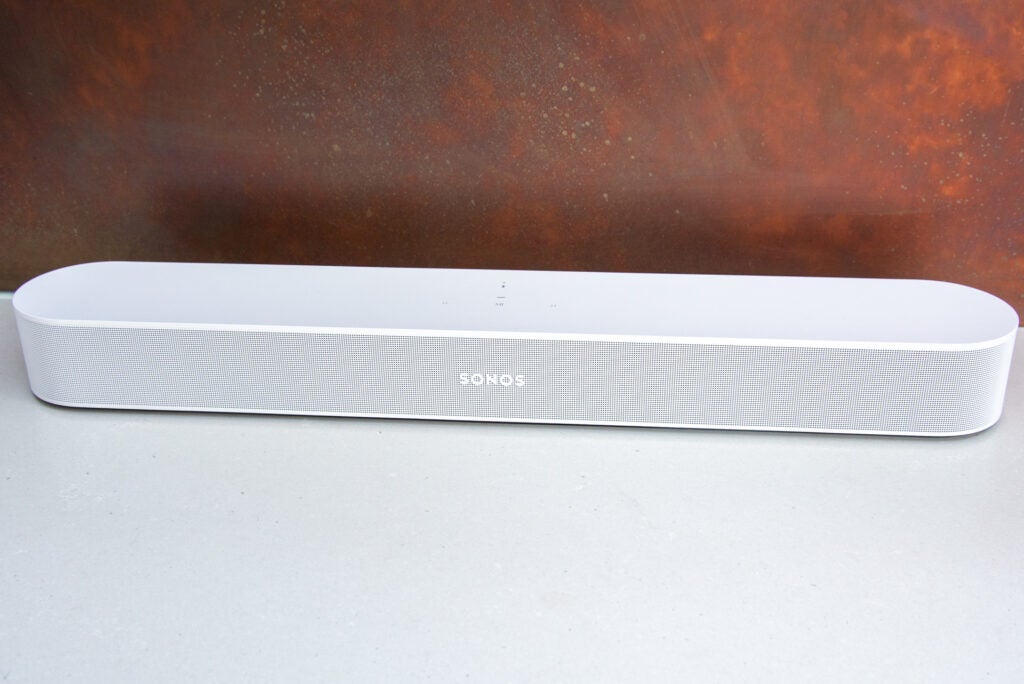How to improve your TV’s sound

You’ve bought a TV, turned it on and are impressed by the image, but the sound – it’s just so flat and uninspiring.
And why? Since the dawn of flat-screen TVs, there’s been less space to fit in all the beefy audio units required to deliver an audio experience that matches the visuals, at least compared to flat-screen’s CRT and rear-projection TV forebears.
So, while TVs occupy less space, come in more sizes, are aesthetically more pleasing and incorporate a wealth of smarts and technology, the one aspect that tends to feel below par is the audio.
To help remedy your woes, we’ve come up with several ways of improving your TV’s sound, so those Hollywood blockbusters and TV series both look and sound as good as possible.
1. Buy a soundbar
The most obvious solution. Soundbars come in many sizes, and if you have a small TV and need a compact soundbar, the market is crowded for options from the likes of JBL, Bose, Sonos and Samsung, to name a few. Often, you can get compact soundbars for less than £500 and given their size, they’re more appropriate for smaller rooms.

If you want a bigger sound, then you’ll want to consider a full-sized soundbar that comes with a subwoofer. While single-bar efforts can do a decent job of approximating low-end frequencies on their own – certainly better than most TVs – there’s no beating a separate bass unit for those deep and resonating low frequencies that reverberate around the room, adding bass extension and dynamism in the process. Bass is important, and you can always tell when its lacking.

These bars can reach into four-figure prices, but well worth considering if you have the space to accommodate them, as well as understanding neighbours. If you want the best single soundbar, in fact of the best soundbar full stop, the Sennheiser Ambeo Soundbar is an awe-inspiring effort. But it does cost £2000.

2. Surround yourself with sound
The next option is to go down the surround sound route. This often diverges into two paths: a soundbar system with a sub and satellite speakers, or the more traditional home cinema route of a system that features floorstanders, subwoofers, standmount and centre speakers.
There are positives and negatives of both approaches, but both take up space – a traditional home cinema system more so due to the size of its speakers – and as such are best suited for bigger rooms or bespoke home cinema set-ups. Neither are really for the casual viewer.
Soundbar systems are more convenient than their bespoke home cinema counterparts as they a) are wireless and don’t need (as many) cables to connect speakers together, and b) usually have a smaller footprint.
If you want to bring the cinema experience to your home, a surround sound system would be the option to get comfortable with, especially if you’re thinking about Atmos or DTS:X.
While home cinema systems require an upfiring speaker model that sits on an existing speaker to produce the height effects that Atmos and DTS:X rely on, soundbars can achieve the same effect through built-in upfiring speakers (which bounce sound off the ceiling to your ears). They create the effect virtually by using digital processing and psychoacoustics to ‘trick’ the brain into thinking where the sound is, or by using phantom speakers, which replicate the position of physical speakers by generating wave fronts (it’s a little complicated).
Here are some other surround sound options to consider
- WiSA – WiSA stands for Wireless Speaker & Audio and refers to a wireless audio specification that allows up to eight channels of uncompressed sound 24-bit / 96kHz audio with low latency and less than 1 microsecond of synchronisation between speakers. The aim is to offer a seamless and convenient wireless experience up to the highest standards, making it easy to set-up (no wires necessary), with support for stereo and 2.1 system going up to 5.1, 7.1 set-ups and Dolby Atmos. LG is one of the members of WiSA and supports it through its OLED TVs, with other members including the likes of Philips, Bang & Olufsen and Harman.
- DTS Play-Fi Home Theatre – An extension of the DTS Play-Fi system, this option is another wireless specification that enables several configurations to wirelessly upgrade a TV’s audio performance. Users can use the TV’s built-in speakers as part of the surround system or rely instead on a Play-Fi compatible speakers to add more prowess to the system, avoiding that iffy HDMI handshake issue altogether.
3. Add Bluetooth speakers

Another cheaper option is to add wireless Bluetooth speakers to your TV. Most TVs (although not all) support Bluetooth out of the box and you can connect a soundbar through this method (though HDMI offers the best quality).
A Bluetooth speaker would be also a cheaper option, and LG supports this with its Bluetooth Surround Ready feature for its OLEDs that allows two Bluetooth speakers (for example, LG’s own Xboom PL7) to be connected to produce a more spacious sound.
4. Or listen through your headphones

Headphones are another option if your TV supports Bluetooth, and if you already have a pair to hand, are the most convenient option on this list. This does add a more personal and private listening experience since it’s being beamed straight to your ears, and we’d say that for the best listening experience that a pair of over-ears would work best.
Roku support private listening through their app, Panasonic has their Dual Bluetooth Connection so two headphones can be connected. Sony supports headphone/soundbar listening on select models, while any Samsung TV that comes with a smart remote supports a Bluetooth connection.





